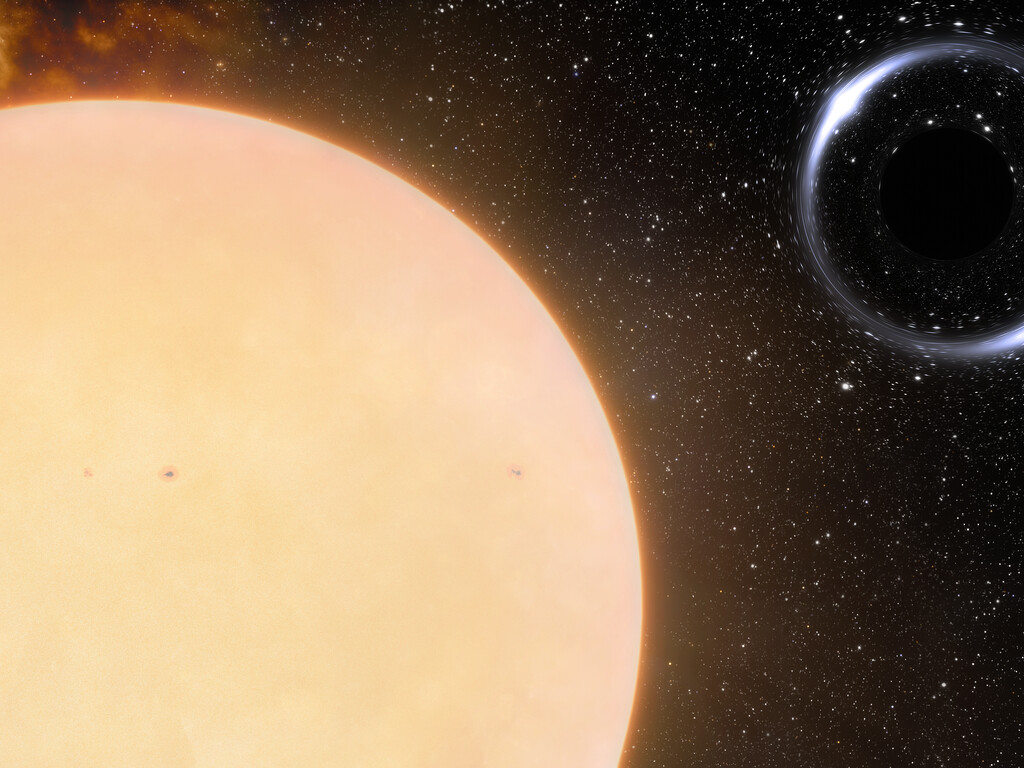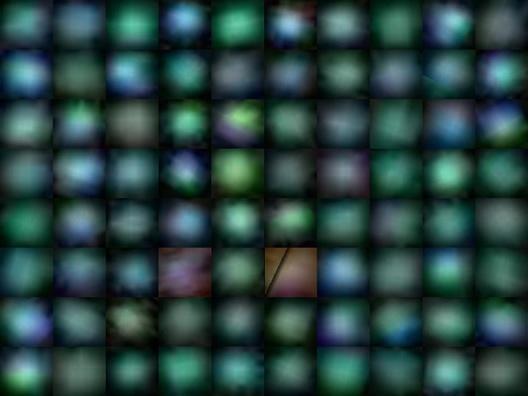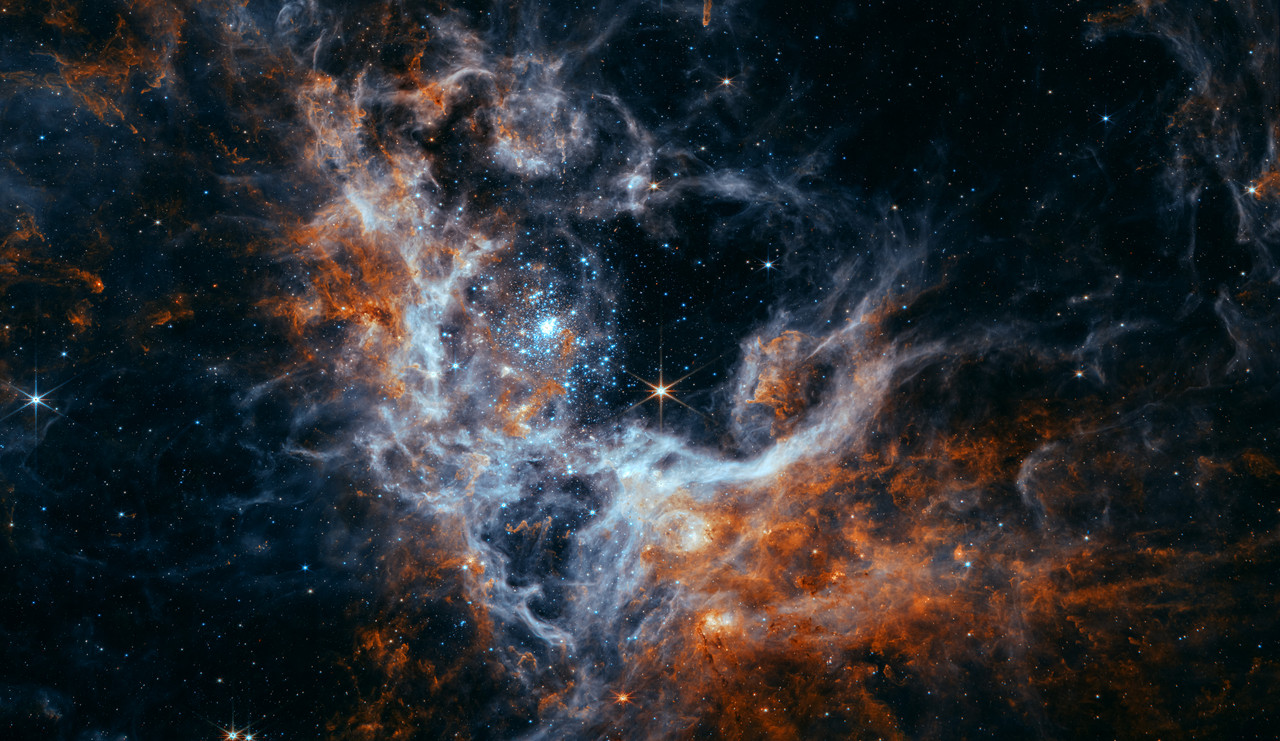-
 jorndoe
4.2kJust in time for Halloween:
jorndoe
4.2kJust in time for Halloween:
The high-resolution image is quite something:
Pillars of Creation (MIRI Image) -
 ssu
9.6kSeems that James Webb telescope is in heavy use, new interesting images:
ssu
9.6kSeems that James Webb telescope is in heavy use, new interesting images:
Scientists are looking at light from the universe’s first and oldest star clusters in a new deep field image sent by the James Webb Space Telescope.
Deep field images are captured when powerful telescopes like Webb and the Hubble Space Telescope point their lenses toward dark spots in space between visible stars and leave the lenses open long enough to capture images.
These latest images show galaxies from the farthest parts of the universe including one 9 billion light-years away, reports say. Each one of them holds millions of stars.
-
 Agent Smith
9.5kMighty intersting ... the light from these stars, I simply can't believe, are from billions and billions of light years away!
Agent Smith
9.5kMighty intersting ... the light from these stars, I simply can't believe, are from billions and billions of light years away! -
 javi2541997
7.1kthe light from these stars, I simply can't believe, are from billions and billions of light years away! — Agent Smith
javi2541997
7.1kthe light from these stars, I simply can't believe, are from billions and billions of light years away! — Agent Smith
:sparkle: Beautiful how they show their brightness to us. Isn't it? :sparkle: -
 Agent Smith
9.5kBeautiful how they show their brightness to us. Isn't it? :sparkle: — javi2541997
Agent Smith
9.5kBeautiful how they show their brightness to us. Isn't it? :sparkle: — javi2541997
Yep! The birghtness, it's compelling, for some reason. -
 magritte
572In other news, A surprisingly near black hole about 10 times more massive than our Sun has been found just 1,560 light-years from Earth, which is about as far as the Orion Nebula. Gaia BH1, is part of a binary star system whose other member is a Sun-sized star about as far from its companion black hole as Mars is from the Sun.
magritte
572In other news, A surprisingly near black hole about 10 times more massive than our Sun has been found just 1,560 light-years from Earth, which is about as far as the Orion Nebula. Gaia BH1, is part of a binary star system whose other member is a Sun-sized star about as far from its companion black hole as Mars is from the Sun.

-
 180 Proof
16.3k
180 Proof
16.3k -
 Wayfarer
25.8kWhat's been going on with JWST recently? — Changeling
Wayfarer
25.8kWhat's been going on with JWST recently? — Changeling
James Webb Telescope question costs Google $100 billion
Google's hyped artificial intelligence (AI) chatbot, Bard, just attributed one discovery to Webb that was completely false. In a livestreamed event, blog post(opens in new tab) and tweet(opens in new tab) showing the test AI in a demo Tuesday, the chatbot was asked, "What new discoveries from the James Webb Space Telescope can I tell my nine-year-old about?"
The query came back with two correct responses about "green pea" galaxies and 13-billion-year-old galaxies, but it also included one whopping error: that Webb took the very first pictures of exoplanets, or planets outside the solar system. The timing of that mistake was off by about two decades. ...
The embarrassing error for Google caused the search giant's parent company, Alphabet Inc., to lose $100 billion in market value Wednesday, according to Reuters
---
A COSMIC RAY struck the James Webb Space Telescope (JWST) and frazzled one of its instruments, according to NASA and the Canadian Space Agency (CSA).
...The Near Infrared Imager and Slitless Spectrograph (NIRISS), experienced a puzzling anomaly on January 15, when it suffered a communications delay within the instrument. This then caused NIRISS’ flight software to time out. After a thorough review, a reboot, and a test observation, teams from both space agencies are breathing a sigh of relief. — JWST Instrument Shut Down by Radiation -
 jorndoe
4.2kCleaning pays:
jorndoe
4.2kCleaning pays:
JWST is better than anyone expected — here’s why
— Ethan Siegel · Big Think · Jan 23, 2023 -
 magritte
572It's Hard to be Green
magritte
572It's Hard to be Green

A green pea galaxy imaged by the Sloan Digital Sky Survey is shown alongside an infrared picture of an early pea [04590] captured by NASA’s James Webb Space Telescope. [...] Compensating for the cluster’s gravitational lensing effect and the galaxy’s greater distance to us, 04590 is even more compact, comparable to the smallest nearby green peas. — NASA
Green pea galaxies are small green and round.

But can our Milky Way be green? -
 magritte
572In other news, newly discovered asteroid 2023DW is on a collision course with Earth due to arrive on Feb 14, 2046.
magritte
572In other news, newly discovered asteroid 2023DW is on a collision course with Earth due to arrive on Feb 14, 2046.
It is about 50 meters across, roughly similar to the Tunguska (1908) and the Barringer Meteor Crater impactors.
However, people young enough to experience this in 2046 should not build up their expectations. NASA or some other agency will likely succeed in displacing the asteroid's orbit enough to delay or eliminate this event.
-
 Wayfarer
25.8kJWT spots dust storm on exoplanet.
Wayfarer
25.8kJWT spots dust storm on exoplanet.
Researchers observing with NASA’s James Webb Space Telescope have pinpointed silicate cloud features in a distant planet’s atmosphere. The atmosphere is constantly rising, mixing, and moving during its 22-hour day, bringing hotter material up and pushing colder material down. The resulting brightness changes are so dramatic that it is the most variable planetary-mass object known to date. The team, led by Brittany Miles of the University of Arizona, also made extraordinarily clear detections of water, methane and carbon monoxide with Webb’s data, and found evidence of carbon dioxide. This is the largest number of molecules ever identified all at once on a planet outside our solar system.
https://webbtelescope.org/contents/news-releases/2023/news-2023-105
And another interesting astronomy story although not connected to JWT
Organic molecules have been detected in samples collected by Japan's Hayabusa2 mission from the near-Earth asteroid Ryugu.
https://www.cnn.com/2023/03/21/world/ryugu-asteroid-organic-molecules-scn/index.html
As a longtime fan of the Panspermia thesis, can’t help but be interested. -
 Wayfarer
25.8kFurther to the above:
Wayfarer
25.8kFurther to the above:
The James Webb Space Telescope (JWST) appears to be finding multiple galaxies that grew too massive too soon after the Big Bang, if the standard model of cosmology is to be believed.
In a study published in Nature Astronomy, researchers at The University of Texas at Austin find that six of the earliest and most massive galaxy candidates observed by JWST stand to contradict the prevailing thinking in cosmology. That’s because other researchers estimate that each galaxy is seen from between 500 million and 700 million years after the Big Bang, yet measures more than 10 billion times as massive as our sun. One of the galaxies even appears to be more massive than the Milky Way, despite the fact that our own galaxy had billions of more years to form and grow.
“If the masses are right, then we are in uncharted territory,” said Mike Boylan-Kolchin, associate professor of astronomy who led the study. “We’ll require something very new about galaxy formation or a modification to cosmology. One of the most extreme possibilities is that the universe was expanding faster shortly after the Big Bang than we predict, which might require new forces and particles.”
For galaxies to form so fast at such a size, they also would need to be converting nearly 100% of their available gas into stars.
“We typically see a maximum of 10% of gas converted into stars,” Boylan-Kolchin said. “So while 100% conversion of gas into stars is technically right at the edge of what is theoretically possible, it’s really the case that this would require something to be very different from what we expect.” — UT News, Austin, Texas, 13 Apr
Media commentary has been murmuring this possibility since September 2022, with many 'alt-science' sites and dubious youtube channels crowing about 'breaking the Big Bang'. The powers that be meanwhile have until now been tut-tutting the whole idea, move right along, nothing to see here. But it seems there might be a fundamental problem in the current cosmological model. -
 unenlightened
10kGod did it.
unenlightened
10kGod did it.
Just for balance, this is not a new problem. This from Jan 2021 —well before the launch of JWST.
https://www.scientificamerican.com/article/giant-galaxies-from-the-universes-childhood-challenge-cosmic-origin-stories/The number of elements in C1-23152 that were found to be heavier than hydrogen and helium—which astronomers collectively refer to as “metals”—hinted at its strangeness. Metals are produced by star formation, which jettisons them into a galaxy’s interstellar medium through supernovae—making them available for next-generation stars to use. More metals equal more cycles of star formation, and it took present-day massive galaxies many billions of years to become metal-rich. C1-23152’s spectrum revealed the galaxy to be a veritable metal bonanza back in its early days, which means it made a lot of stars very rapidly not long after it first formed.
How rapidly? The spectral features of stars can answer that question, too, because they reveal which ones have elements typical of younger or older stars. The youngest stars in C1-23152 are roughly 150 million years old. The most ancient are about 600 million years old. That means the galaxy made some 200 billion solar masses in just a half-billion years—a rate of 450 stars per year, more than one per day. The figure is almost 300 times greater than estimates of the Milky Way’s current output. If most galaxies are slow-burning log fires, with new flames popping up every so often, C1-23152 is a gasoline-soaked bonfire. -
 unenlightened
10kAnd here's a new article: https://skyandtelescope.org/astronomy-news/what-the-discovery-of-massive-early-galaxies-could-mean-for-cosmology/
unenlightened
10kAnd here's a new article: https://skyandtelescope.org/astronomy-news/what-the-discovery-of-massive-early-galaxies-could-mean-for-cosmology/
In which it becomes clear that the standard model of cosmology is already in trouble over the Hubble constant, not to mention the dependence on dark matter and dark energy. So we might be almost ready for a whole new model. When you have constants that won't remain constant and undetectable matter and energy inserted to make the numbers come right - you have a problem, Houston. -
 jorndoe
4.2k
jorndoe
4.2k -
 Christoffer
2.4kThe star: — Banno
Christoffer
2.4kThe star: — Banno
The model: — Banno
It's stuff like this that shows just how much can be extrapolated through scientific data and math and how "it's just a theory" by many anti-intellectuals and anti-science people holds little water when balancing hypotheticals against each other. The abstract nature of science before being verified in ways that can be witnessed through our senses, makes it so hard for some to accept scientific concepts that they don't, and then form whatever nonsense they believe is correct. So in areas that are even more abstract in nature, like quantum physics, no wonder people jump straight into nonsense fantasies when trying to wrap their heads around the actual data.
Welcome to The Philosophy Forum!
Get involved in philosophical discussions about knowledge, truth, language, consciousness, science, politics, religion, logic and mathematics, art, history, and lots more. No ads, no clutter, and very little agreement — just fascinating conversations.
Categories
- Guest category
- Phil. Writing Challenge - June 2025
- The Lounge
- General Philosophy
- Metaphysics & Epistemology
- Philosophy of Mind
- Ethics
- Political Philosophy
- Philosophy of Art
- Logic & Philosophy of Mathematics
- Philosophy of Religion
- Philosophy of Science
- Philosophy of Language
- Interesting Stuff
- Politics and Current Affairs
- Humanities and Social Sciences
- Science and Technology
- Non-English Discussion
- German Discussion
- Spanish Discussion
- Learning Centre
- Resources
- Books and Papers
- Reading groups
- Questions
- Guest Speakers
- David Pearce
- Massimo Pigliucci
- Debates
- Debate Proposals
- Debate Discussion
- Feedback
- Article submissions
- About TPF
- Help
More Discussions
- Other sites we like
- Social media
- Terms of Service
- Sign In
- Created with PlushForums
- © 2025 The Philosophy Forum












